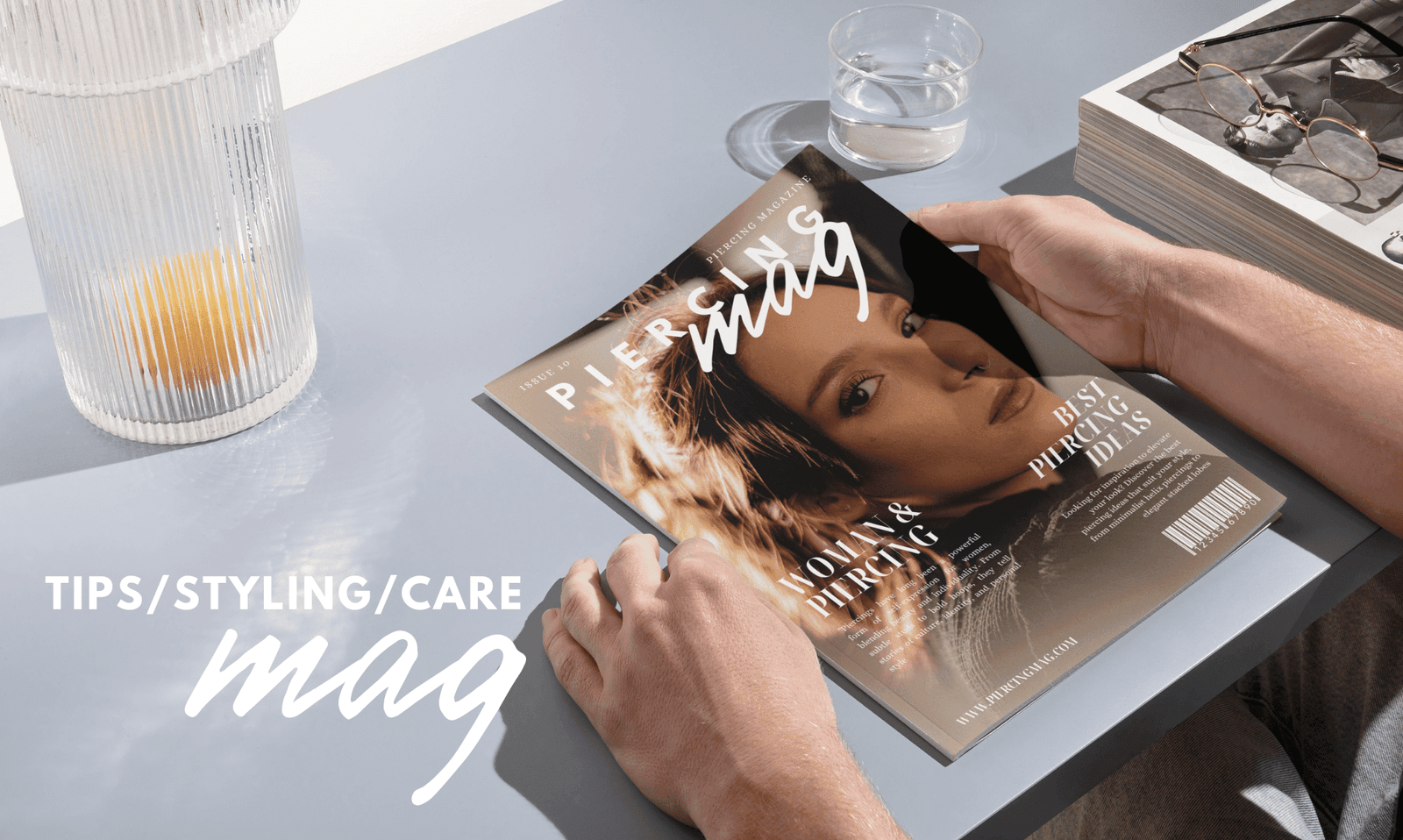Whether you’re getting your first lobe piercing or adding a new cartilage piece to your curated ear, healing is a big part of the journey. Knowing how long it takes and what to expect during the healing process helps prevent infection, irritation, and disappointment.
In this guide, we’ll walk you through typical healing timelines, what factors can slow healing down, and how to care for your piercings during each stage.
1️⃣ Average Healing Time by Piercing Type
Different areas of the ear heal at different speeds due to tissue type and blood flow. Here’s a quick breakdown:
| Piercing Type | Healing Time |
|---|---|
| Lobe | 6–8 weeks |
| Upper Lobe | 8–10 weeks |
| Helix (Outer Cartilage) | 6–9 months |
| Forward Helix | 6–9 months |
| Flat | 6–12 months |
| Tragus | 6–12 months |
| Conch | 6–12 months |
| Daith | 6–12 months |
| Rook | 9–12 months |
| Industrial | 9–12+ months |
💡 Lobes heal faster because they’re soft tissue. Cartilage piercings take longer due to reduced blood flow and higher sensitivity to trauma.
2️⃣ Healing Phases: What to Expect
🔹 Initial Phase (Days 1–14)
- Redness, mild swelling, tenderness
- Clear or pale yellow discharge is normal
- Avoid touching or rotating the jewelry
🔹 Intermediate Phase (Weeks 3–8)
- Reduced swelling
- Piercing may feel “normal,” but it’s not fully healed
- Avoid changing jewelry too soon
🔹 Final Phase (Months 2–12)
- Tissue strengthens around the piercing
- You may be able to change jewelry (depending on placement)
- Some cartilage piercings stay sensitive for months
3️⃣ Signs Your Piercing Is Fully Healed
✔️ No pain, swelling, or discharge
✔️ Jewelry moves freely without discomfort
✔️ Skin tone around the piercing is even and healthy
🚫 Still healing if:
- The area is red, swollen, or crusty
- You feel soreness when cleaning or changing jewelry
- You notice irritation bumps or recurring inflammation
4️⃣ What Slows Down Healing?
❌ Touching the piercing frequently
❌ Sleeping on it
❌ Wearing tight or low-quality jewelry
❌ Swimming in pools, lakes, or the ocean
❌ Changing jewelry too soon
❌ Using harsh cleaners like alcohol or peroxide
5️⃣ How to Support Faster, Healthier Healing
6️⃣ When to See a Professional
🚨 If you notice any of the following:
- Severe pain or throbbing
- Green/yellow pus or foul odor
- A bump that increases in size
- Fever or general illness
It’s always safer to check with your piercer or a doctor if something doesn’t feel right.
Healing time varies, but patience, high-quality jewelry, and proper aftercare go a long way in ensuring a successful and stylish piercing. While lobe piercings can heal in just a couple of months, cartilage areas require more time and attention—but the results are totally worth it.
💬 What was your longest-healing piercing? Share your experience in the comments!



Leave a Reply